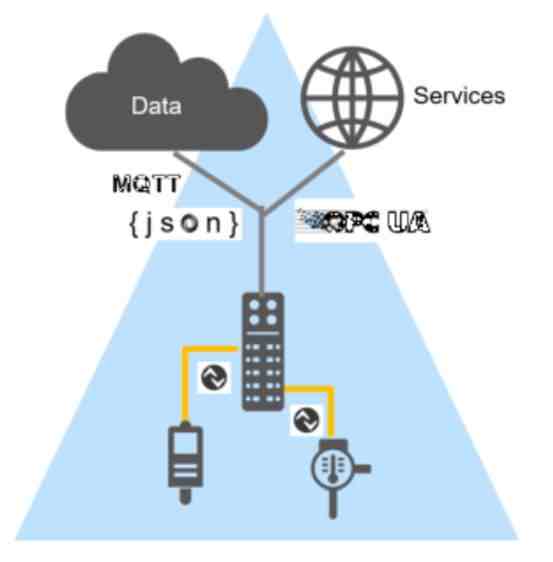

End users want more. They want more data and information about their processes. They want more than their traditional sensors provide, and they want smarter machines. One of the key reasons is the shortage of skilled personnel. With the exodus of experienced workers, much of the operational, procedural, and maintenance knowledge required to operate machines effectively is departing. Smart sensors offer a path to the digital capture of knowledge, as they can enable predictive maintenance rather than reactive or preventive maintenance, based on traditional sensors. However, the implementation of smart sensors is just not enough. To be effective, the information provided by these sensors must get to the right people, at the right time, and in the right context.
Today, users are changing the way they deploy sensors and connectivity technologies to collect and transfer real-time data to all levels of the manufacturing or production and enterprise processes. In the case of smart sensing, network technologies are at least as important as the smart sensor itself. Tight integration between the sensor and the control platform is a must to improve Overall Equipment Effectiveness (OEE) and reduce downtime.
Ultimately, the success of smart sensors will rely on making them transparent to Ethernet-based open  networks. One way of achieving this transparency is with IO-Link. IO-Link is a low-cost, point-to-point sensor network that is universal, smart, and easy to implement. Described by the IEC standard IEC 61131-9, IO-Link is fieldbus independent, but can be integrated into all fieldbus systems. It offers remote parameterization and diagnostics of sensors and actuators, and remote maintenance of devices via bidirectional communication.
networks. One way of achieving this transparency is with IO-Link. IO-Link is a low-cost, point-to-point sensor network that is universal, smart, and easy to implement. Described by the IEC standard IEC 61131-9, IO-Link is fieldbus independent, but can be integrated into all fieldbus systems. It offers remote parameterization and diagnostics of sensors and actuators, and remote maintenance of devices via bidirectional communication.
Looking at the majority of the sensor suppliers’ smart sensors portfolio, IO-Link is integrated in most of the widely used sensors, including proximity, flow, level, photoelectric, pressure, temperature, and ultrasonic sensors. Most suppliers offer a wide range of IO-Link sensors, an IO-Link Master, and IO-Link connectivity like couplers, Ethernet, cables, and devices. This offers a seamlessly integrated solution for information from IO-Link to be available on standard Ethernet-based networks. IO-Link master gateways support cloud integration via OPC UA and/or JSON via Representational State Transfer (REST) API or MQTT for EtherNet/IP, Modbus, and/or PROFINET devices.
The data can be accessed and used in a standardized way by OPC UA clients, such as ERP systems, outside the classic automation pyramid. These features create the foundation for an automation system that can enable digital transformation and help users to improve OEE and reduce downtime.
ARC’s European Industry Forum on May 17-18, 2022, will host a whole session on IO-Link. Join us at the European Forum to learn more about how IO-Link enables digital transformation and benefits technology end users and OEMs.

